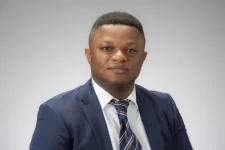Hospitals that are Understaffed for Infection Prevention and Control Have Higher Rates of Infection, Study Says
Nearly 4 in 5 hospitals are not staffed at sufficient level to keep patients safe from preventable infections
Arlington, Va. — October 10, 2024 — Inadequate infection prevention and control staffing levels are associated with higher rates of healthcare-associated infections, according to a new study published today in the American Journal of Infection Control.
The study, conducted by the APIC Center for Research, Practice & Innovation, summarizes a pilot project to evaluate a new online calculator aimed at providing facility-specific recommendations for infection prevention staffing.
Infection prevention and control programs with staffing levels that are below expected demonstrated significantly higher rates of central line-associated bloodstream infections (CLABSI), catheter-associated urinary tract infections (CAUTI), Clostridioides difficile infections, and colon surgical site infections.
For example, 25% of facilities staffed at lower-than-expected staffing levels had elevated CAUTI rates, as compared to only 7% of hospitals with expected or above expected staffing levels.
In an analysis of 390 acute care hospitals that participated in the study, the calculator tool identified nearly 80% (79.2%) as having insufficient staff levels in this area.
Historically, hospitals utilized benchmarks that relied on a ratio of infection preventionists (IPs) per inpatient bed (ranging from 69-100 beds in the last decade). This traditional “one size fits all” method for calculating appropriate IP staffing levels is inadequate and outdated in the modern complex healthcare environment.
Recognizing the need for a more customized recommendation for IP staffing, APIC developed an online staffing calculator with a predictive algorithm that allows users to enter information about their hospital facility and receive an assessment of staffing needs specific to them. The calculator adjusts optimal staffing ratios based on factors such as the complexity of services provided or the presence of an emergency department, burn unit, stem cell transplant unit, or inpatient rehabilitation unit.
“This facility-specific calculator for infection prevention and control staffing levels is a completely novel tool for our community and one that is clearly needed to help hospitals advocate for adequate resources to keep patients and healthcare workers safe,” said Rebecca Bartles, DrPH, MPH, CIC, FAPIC, executive director of the Center for Research, Practice & Innovation at APIC and lead author of this study. “We look forward to updating the calculator soon with new categories and more granularity based on our experience with the beta tool and to making it available to the IP and broader healthcare communities.”
Additional details from the study include:
Hospitals included ranged in size from eight beds to more than 2,000 beds
Staffing levels ranged from 1 IP per 40 beds at small hospitals (fewer than 25 beds) to a peak of 1 IP per 161 beds in hospitals with 301-400 beds
More than 85% of respondents who believed their staff levels were inadequate came from hospitals found to have lower than expected IP staffing.
“This study lays to rest any doubt about the critical need for appropriate levels of IP staffing, identifying an undeniable link between sufficient infection prevention and control resources and patient safety, as measured by rates of healthcare-associated infections,” said Tania Bubb, PhD, RN, CIC, FAPIC, 2024 APIC president. “I believe this calculator will be essential for ensuring that healthcare facilities can target optimal IP staff numbers and improve patient care. It’s an excellent example of the research and development APIC is doing to enhance infection prevention and control everywhere.”
APIC calls on hospital leadership to require use of the staffing calculator to evaluate the need for IP staff, and more importantly, make needed investments in IP staffing per the customized staffing recommendations for their institutions. Additionally, APIC urges the U.S. Centers for Medicare & Medicaid Services (CMS) and standards bodies to require use of the APIC staffing calculator to determine appropriate IP staffing needs.
About APIC
Founded in 1972, the Association for Professionals in Infection Control and Epidemiology (APIC) is the leading association for infection preventionists and epidemiologists. With more than 15,000 members, APIC advances the science and practice of infection prevention and control. APIC carries out its mission through research, advocacy, and patient safety; education, credentialing, and certification; and fostering development of the infection prevention and control workforce of the future. Together with our members and partners, we are working toward a safer world through the prevention of infection. Join us and learn more at apic.org.
About AJIC
As the official peer-reviewed journal of APIC, The American Journal of Infection Control (AJIC) is the foremost resource on infection control, epidemiology, infectious diseases, quality management, occupational health, and disease prevention. Published by Elsevier, AJIC also publishes infection control guidelines from APIC and the CDC. AJIC is included in Index Medicus and CINAHL. Visit AJIC at ajicjournal.org.
NOTES FOR EDITORS
“Closing the Gap on Infection Prevention Staffing Recommendations: Results from the Beta Version of the APIC Staffing Calculator,” by Rebecca Bartles, Sara Reese, and Alexandr Gumbar, was published online in AJIC on October 10, 2024. Available at: https://doi.org/10.1016/j.ajic.2024.09.004
AUTHORS
Rebecca Bartles, DrPH, MPH, CIC, FAPIC (corresponding author: rbartles@apic.org), Association for Professionals in Infection Control and Epidemiology, Center for Research, Practice & Innovation
Sara Reese, PhD, MPH, CIC, FAPIC, Association for Professionals in Infection Control and Epidemiology, Center for Research, Practice & Innovation
Alexandr Gumbar, SA, CSM, MCSE, Association for Professionals in Infection Control and Epidemiology, Information Technology
# # #
END




